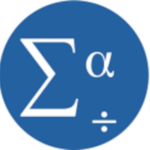SPSS has a nice little feature for adding and averaging variables with  missing data that many people don’t know about.
missing data that many people don’t know about.
It allows you to add or average variables that have some missing data, while specifying how many are allowed to be missing. (more…)
 You may have heard that using SPSS syntax is more efficient, gives you more control, and ultimately saves you time and frustration. It’s all true.
You may have heard that using SPSS syntax is more efficient, gives you more control, and ultimately saves you time and frustration. It’s all true.
….And yet you probably use SPSS because you don’t want to code. You like the menus.
I get it.
I like the menus, too, and I use them all the time.
But I use syntax just as often.
At some point, if you want to do serious data analysis, you have to start using syntax. (more…)
Okay, maybe these SPSS shortcuts won’t make your whole life easier, but it will help your work life, at least the SPSS part of it.
When I consult with researchers, a common part of that is going through their analysis together. Sometimes I notice that they’re using some shortcut in SPSS that I had not known about.
Or sometimes they could be saving themselves some headaches.
So I thought I’d share three buttons you may not have noticed before that will make your data analysis more efficient.
(more…)
We’ve talked a lot around here about the reasons to use syntax — not only menus — in your statistical analyses.
Regardless of which software you use, the syntax file is pretty much always a text file. This is true for R, SPSS, SAS, Stata — just about all of them.
This is important because it means you can use an unlikely tool to help you code: Microsoft Word.
I know what you’re thinking. Word? Really?
Yep, it’s true. Essentially it’s because Word has much better Search-and-Replace options than your stat software’s editor.
Here are a couple features of Word’s search-and-replace that I use to help me code faster:
(more…)
by Lucy Fike
We know that using SPSS syntax is an easy way to organize analyses so that you can rerun them in the future without having to go through the menu commands.
Using Python with SPSS makes it much easier to do complicated programming, or even basic programming, that would be difficult to do using SPSS syntax alone. You can use scripting programming in Python to create programs that execute automatically. (more…)
I sometimes get asked questions that many people need the answer to. Here’s one about non-parametric ANOVA in SPSS.
Question:
Is there a non-parametric 3 way ANOVA out there and does SPSS have a way of doing a non-parametric anova sort of thing with one main independent variable and 2 highly influential cofactors?
Quick Answer:
No.
Detailed Answer:
There is a non-parametric one-way ANOVA: Kruskal-Wallis, and it’s available in SPSS under non-parametric tests. There is even a non-paramteric two-way ANOVA, but it doesn’t include interactions (and for the life of me, I can’t remember its name, but I remember learning it in grad school).
But there is no non-parametric factorial ANOVA, and it’s because of the nature of interactions and most non-parametrics.
What it basically comes down to is that most non-parametric tests are rank-based. In other words, (more…)
 missing data that many people don’t know about.
missing data that many people don’t know about.
